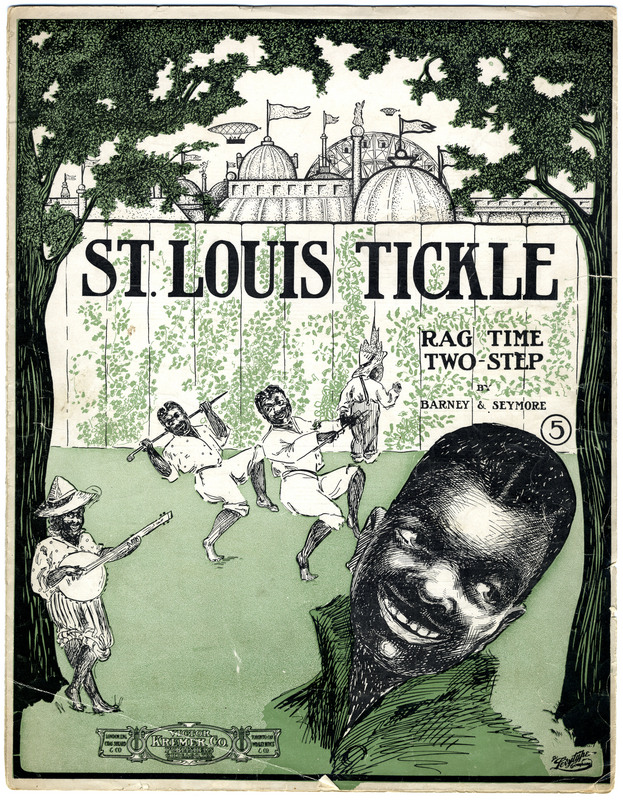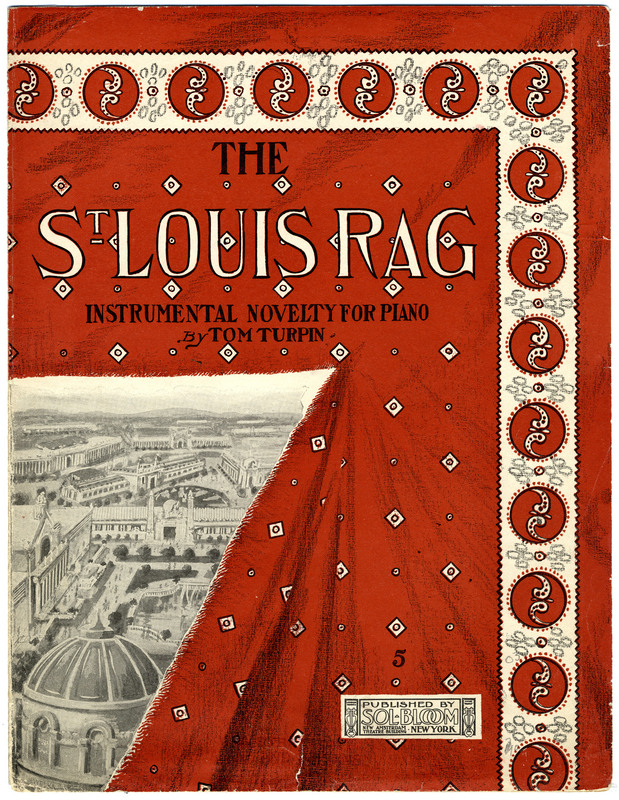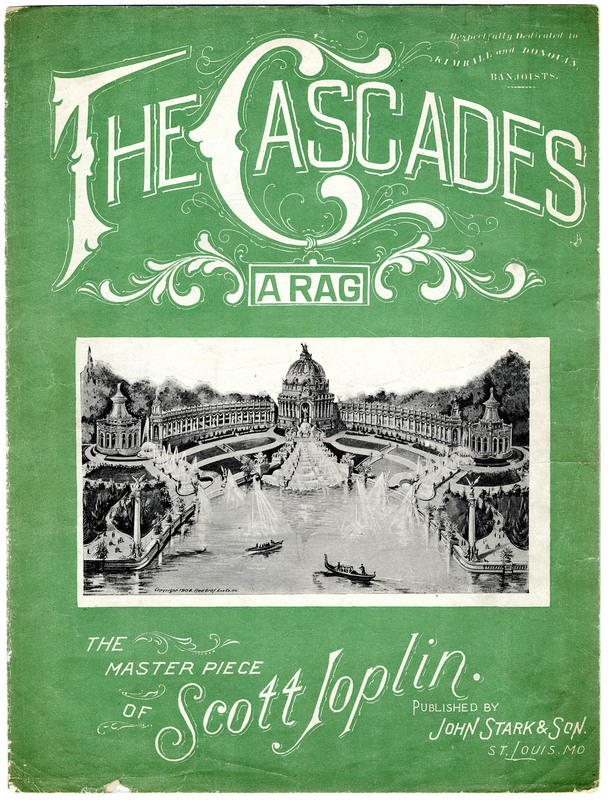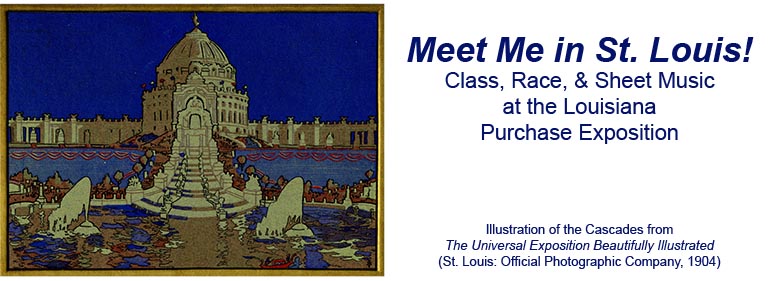Black Popular Culture
White Versions of Black Culture
![Strolling on the Pike : song / [words & music by Geo. G. Zarn]. Strolling on the Pike : song / [words & music by Geo. G. Zarn].](http://omeka.wustl.edu/omeka/files/fullsize/caeabade2ac7c8c6d1a9dc52f525fadc.jpg)
Click the image for more information about this item;
click here to download a pdf of the score.
George G. Zarn's Strolling on the Pike (1904) is a popular comic song, complete with rub-a-dub-dub sound effects. The song’s chorus is particularly noteworthy for mentioning the songs supposedly heard along the Pike, including genres specifically associated with Black culture (please note: these mentions include offensive terminology.) White-composed comic songs often included music or lyrics that simultaneously mimicked and mocked black culture. They developed from the racial caricatures of blackface minstrelsy, an enormously popular form of entertainment in the United States in the late 19th-century. However, none of the other standard characteristics of these faux-Black songs – syncopated rhythms or imitations of Black dialects – appear in Strolling on the Pike.

Click the image above for more details about this item;
click here to download a pdf of the score.
St. Louis Tickle (1904), by white Missouri native Theron C. Bennett (here published under the pseudonym Barney & Seymore), includes two elements white audiences associated with black musical culture: syncopated rhythms and a “striding” bass line requiring the pianist’s left hand to negotiate wide leaps. The introduction, interlude, and second strain quote the notoriously off-color Black folk song, Funky Butt. However, the cover illustration clearly shows the sharp divide between white audiences’ appreciation for black music and their disdain for actual people of color: the Black performers are located outside the fenced-off Pike, peering through a knothole to the fair on the other side. Listen to St. Louis Tickle as a banjo solo at the University of California, Santa Barbara Library here.
Ragtime as Black Culture

Click the image above for more details about this item;
click here to download a pdf of the score.
Although ragtime was not officially programmed at any of the Exposition's musical pavilions, ragtime pianists occasionally played at cafés along the Pike. Black businessman Thomas Turpin (1873-1922), owner of a famous St. Louis ragtime venue called the Rosebud Saloon, was especially eager to present ragtime as a respectable musical genre. The cover of Turpin's St. Louis Rag (1903) emphasizes such aspirations: a red curtain sweeps back to reveal an aerial vista of the fairgrounds. Listen to St. Louis Rag as a banjo solo at the University of California, Santa Barbara Library here.

Click the image above for more details about this item;
click here to download a pdf of the score.
The most prominent exception to the ongoing black-white/popular-elite divide was African American Scott Joplin’s The Cascades (1904). Joplin (ca. 1868-1917) longed to be taken seriously as a composer, and his rags are often rhythmically, formally, and harmonically more complex than those of other ragtime composers, such as Thomas Turpin.
The cover of The Cascades, as published by St. Louis printer John Stark & Son, Joplin’s primary publisher, reflects Joplin's elite aspirations. Much like the illustration for Conrath's La Cascade (pictured in European Ambitions), it features a realistic illustration of the Festival Hall, the Cascades, and the Grand Basin, with the archways of the Terraces of the States in the background. Stark advertised The Cascades as being “as high-class as Chopin.”
Joplin’s rag depicts the flowing Cascades with an opening melody that sounds a sinuous sequence of straight sixteenth-notes. This lack of syncopation is unusual in Joplin’s ragtime melodies, but it functions here to represent the constant rush of water through the falls. Similarly, the second strain (beginning at the top of page 3) opens with rapidly descending arpeggios, the aural equivalent of the descending cascades. Listen to a piano roll of The Cascades at the Internet Archive here.
